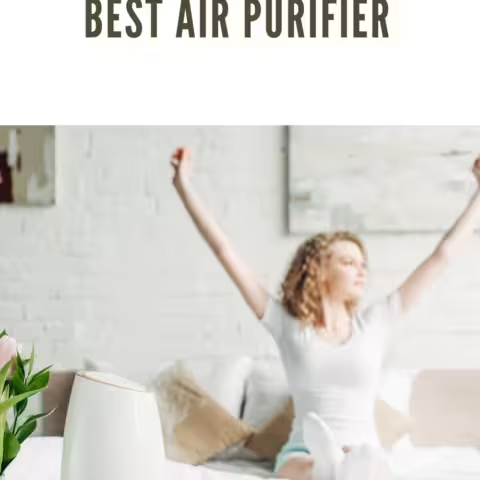Are you allergic to dust? The constant sneezing and wheezing are due to dust allergies. The allergies are caused by body fragments and waste from tiny microscopic organisms, the house dust mite. Allergies and asthma are majorly triggered indoors by dust mites. Dust mites survive in humid environments, mainly in beddings furniture, and feed on skin cells shed by people.
Getting rid of the pests is tough, but you can employ measures to get rid of them.
The dust mites are mostly airborne; hence using an air purifier with a high-efficiency particulate air (HEPA) filter will be a step to reducing the number of dust mites in your home.

Signs you could be allergic to dust.
According to Mayo Clinic, Inflammation of nasal passages caused by dust mite allergy may show symptoms such as:
- • Congestion of the nose
- • Sneezing
- • Postnasal drip
- • Swollen eyes
- • Itchy eyes
- • Rubbing of the nose, especially children
- • Tightening of the chest
- • Trouble breathing
- • Shortness of breath leading to trouble sleeping
Dust mite allergy ranges from mild to severe.
Mild causes running nose and sneezing while severe may lead to persistent congestion and severe asthma attack.
Air purifiers and dust allergies
Mold spores, pollen, pet dander, and dust mites in your home can cause problems if you have allergies or asthma.
An air purifier can help remedy the dust and environmental allergies if you have the right machine type.
The right kind of air purifier to help curb allergens must have a true HEPA filter.
Unlike other filters, a HEPA filter is a particular type of mechanical air filter as it has a fine mesh that traps harmful particles such as pollen, dust mites, and smoke.
Air is forced through the fine mesh, and the allergens are trapped behind in the filter.
What Makes A Good HEPA Filter?
![What Makes A Good HEPA Filter? HEPA is an acronym for "high efficiency particulate air [filter]" (as officially defined by the U.S. Dept. of Energy). This type of air filter is suggested to remove at least 99.97% of dust, pollen, mold, bacteria, and any airborne particles with a size of 0.3 microns. Modern Air Purifier on the Floor in Living Room](https://mommysmemorandum.com/wp-content/uploads/2021/01/What-Makes-A-Good-HEPA-Filter-480x480.avif)
Selecting air purifiers
Air purifiers have different methods and ways of cleaning the air.
Some methods work for getting rid of allergens, and some don’t.
Ozone-producing purifiers will only worsen your respiratory problems.
Reading the labels and asking if you are not sure is advisable.
An air purifier that produces ozone won’t help with allergies.
UV wavelength purifiers are also not advisable for allergy reduction.
The killing of the dust mites then releasing them back in the room will still lead to allergies.
The UV light doesn’t help remove particles from the air; hence not effective in cleaning.
Choosing the right air purifiers for allergies can be hectic as each air purifier uses different filters ranging from HEPA filters, carbon filters, UV air filters, and ion filters.
Choose an air purifier with a True HEPA filter and find out how much air the filter can clean.
Also, the room’s size will affect the type of cleaner you’ll pick as it has to be big enough for it to be efficient.
You can check the number of square feet a unit can handle while evaluating it to pick the most appropriate one for you.
The clean air delivery rate (CADR) determines how many particles and square feet an air purifier can efficiently work.
HEPA filters tend to have a high CADR since they clean out the smallest particles like tobacco smoke.

Setting up the air purifier
If put in the wrong room, the air purifier won’t soften your allergy problem.
You will probably set the cleaner in one of the rooms you watch your TV but will be wrong.
The living area should not be the first room you think about, and it should be the bedroom.
The bedroom is where you spend much of your time; hence the most appropriate to set up your air purifier.
Set it in the room where most hours are spent to get the most benefit from your air purifier.
Using vacuum cleaners that have HEPA filters also traps dust from their exhaust.
They throw less dirt and fewer microscopic dust mites back into the room as you vacuum, which improves allergy symptoms after using such vacuums.
Where is the best place to put an air purifier?
HEPA filters efficiency
Using air purifiers with HEPA filters is a sure way to do away with airborne particles, including dust mites that might worsen your allergy.
Besides the suspended ones, there are other dust mites in bedding, covers, and rugs. It is equally important to clean these areas and avoid sources of allergens, like smoking in the house. Changing air filters is essential to eliminate worn-out filters and increase the cleaner’s efficiency.
How Long Should You Run An Air Purifier?
You should run an air purifier for at least 12 hours a day.
The best results to help with dust allergies are to keep our air purifier running 24 hours a day as dust, and airborne particles will circulate nonstop throughout the day.
Do air purifiers make your house smell better?
How long does it take for an air purifier to clean a room?
Getting an air filter is a step to reduce the number of dust mites in your home, bringing dust allergy relief.
The cleaner also helps prevent other illnesses by destroying harmful airborne germs.
Relieve allergy symptoms with medications and treatments.
There are many models and brands of air purifiers out there.
Choose one that fits your filtration needs and the size of your room before making the purchase.
Resources:
https://smartairfilters.com/en/blog/what-is-hepa-filter-how-hepa-air-filter-work/
https://dehumidifiercritic.com/best-air-purifier-for-allergies/
